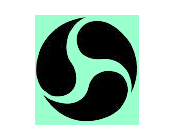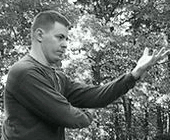

Baguazhang Frequently Asked Questions -
What does Baguazhang mean and what is it?
Ba Gua Zhang is a mandarin Chinese term that literally means Eight Trigram Palm. The Eight Trigrams are in reference to the famous Book of Changes, the Yi Jing, of ancient China that has been used up to the present day as a reference for pursuits as diverse as fortune-telling to philosophy. The word "zhang" literally means palm, as in the palm of your hand. Practitioners of Baguazhang are famous for their use of striking with the open palm, hence the reference in the name.
Baguazhang is a traditional martial art of China that was first known to have been passed on in the mid-nineteenth century. The recognized founder of the style was named Dong Haichuan. After many years of traveling and researching martial arts, he came to be employed in the Palace of the Prince of Su. Eventually this is where he first began teaching the art of Baguazhang and where his reputation as one of the premier martial artists of his day spread as well. Among his most famous and successful students were Yin Fu, Cheng Tinghua, Ma Weiqi, Liu Fengchun, Liang Zhenpu and others. Dong Haichuan only taught students who were experienced in other martial arts. His was essentially a graduate level of martial arts education. As such, each of his students have different emphasis's in their style. Each adapted the principles, refinements and training methods that Dong Haichuan taught to their own martial arts, their experiences, their personality and their body-type.
How is Baguazhang different than other martial arts?
Baguazhang is most visibly notable for its practitioners' core training of walking in a circle while doing their forms and for their use of the open palm when using hand techniques. Baguazhang is known as one of the three main internal martial arts, along with Xingyiquan (Form-Mind Fist) and Taijiquan (Fist of the Extremes).
Baguazhang shares the same goals as all true martial arts - that of subduing the opponent. It's training however, stresses the use of whole body power, the development of a particular type of body movement unique to BaguaZhang, the training of the mind, the unification of the mind and body, and a more holistic view on martial practice.
What is an "Internal" martial art?
There is some debate as to the definition of an internal martial art. My feeling is that the differences are not so much in terms of black and white, yes or no, but in terms of degree. Internal arts will stress the development of the mind and mind/body connection much sooner and to a greater degree than external martial arts. Internal martial arts will also emphasize a constant use of cohesive whole-body power from the frame and structure of the body.
What makes Gao style Baguazhang unique from other styles of Bagua?
All Bagua styles are unique in the fact that they are based upon principles of strategy, principles of good body movement, and principles of interaction. Although there are different lineages of Bagua that will emphasize certain aspects more than others, in the end all Bagua is similar in that it adheres to certain common principles and is eventually adapted to each practitioner.
That said, Gao style Baguazhang is one of a few lines of Bagua that have come down to the present time with a comprehensive training system. While many lineages of Bagua today may only have a couple sets of circling forms and some abstracted applications, Gao style Baguazhang has very specific training in all stand-up ranges of combat, different types of power training, use of all parts of the body, theories of training and principles of use, and much more.
Does Bagua use kicks? Elbows? Knees? Throws? Locks? Punches? Etc.?
Gao style Baguazhang uses all manner of striking, control and throwing with all parts of the body.
If I have no martial arts experience, can I still study Bagua or will it be hard for me?
Gao style Baguazhang is designed as a complete martial art system. It can take a raw beginner and teach him the basics of martial art and advance him through the full range of traditional Bagua skills. It does not require previous experience in other martial arts. Previous experience in martial or other movement arts, however, may allow one to learn at a quicker pace.
The biggest determiner of progress in a beginner's training is discipline to train hard, willingness to train consistently on one's own, and approaching each class with an "empty cup" - a total commitment to an open mind and acceptance of learning.
How are your classes structured?
Core Baguazhang classes will usually begin with some type of warm-up and training in the basics of the system. This will often be training in Bagua jibengong and other core training methods, such as the basic hand methods and single palm changes. The remainder of class will often focus on three main areas: furthering the student's abilities in the individual and partner exercises of Bagua (including power training, forms, etc.), furthering the student's abilities with the fighting methods of Bagua, and exploring the theories and principles of Baguazhang in relation to training and fighting. Student's are expected to continue to research and train what they have learned during class while on their own time. The study of traditional martial arts is always best done as a daily part of one's life.
The Combat Baguazhang classes will usually be divided up into thirds. The first third will emphasize warm ups and conditioning exercises. The second third will usually emphasize skill development. This will often take the form of footwork drills solo or with a partner, striking the pads, working certain hand or foot techniques, or just delving deeper into one type of technique. The latter third of class will tend towards various types of sparring practices. These will always be done with the goal of learning to use Baguazhang as a fighting art, as opposed to just brawling.
Will I learn to fight? Or will there be free-sparring taught?
My goal in teaching this class is to further the development of Gao style Baguazhang as a traditional fighting art. There will be varying types and degrees of cooperative and non-cooperative drills and sparring practices. However, the goal again is to teach the student how to use Baguazhang as a combat art. It is not a quick-fix self-defense class.
Should I also take the Xingyiquan classes along with my study of Baguazhang?
In our Yizong school, Baguazhang and Xingyiquan have traditionally been taught alongside one another. My teacher practices both Bagua and Xingyi, his teacher practiced both, his teacher's teacher practiced both, and so on. Study of both, in my opinion, can only make you a more well-rounded martial artist. Furthermore, studying both will help you to understand either individual art much more fully.
Are private classes available?
Individual private lessons and small group classes are available outside of normal class times by request. The base price for individual private lessons is $70 per hour. Small group class costs will be given on a per instance basis.
What does Zong Wu Men mean?
The name " Zong Wu Men " is reminiscent of the names of traditional martial arts schools in old China. It was chosen for its personal meaning, to me, as the name of my school.
The first character " zong " is a complicated character. It has various, but related meanings, including origin, religion, worship, ancestor, family, admire, follow, emulate, and primary. This character is also the same character as that of our lineage of Baguazhang, Yi Zong Bagua Men, and therefore pays homage to my lineage of martial arts.
The character " wu " means martial. Martial - martial arts, as in war and fighting. The character itself can be broken down into separate parts to mean "(to) stop spear(s)." This character was chosen for its reference to the fighting aspects of the arts. At their heart, the internal martial arts are just that: MARTIAL arts. They were born in and of combat. To lose that is to lose their soul.
The final character " men " literally means the door or gate. In traditional Chinese society it would often refer to those who had entered the gate to come inside - those who had been accepted into a society apart from the rest of the community. It therefore is similar in meaning to a school or group of people together for a common purpose. Here it specifically means a martial arts school or lineage.
Click here to send an email to George Wood for more information, or to request instruction.
Contact George Wood by email at george@yizongbagua.com
